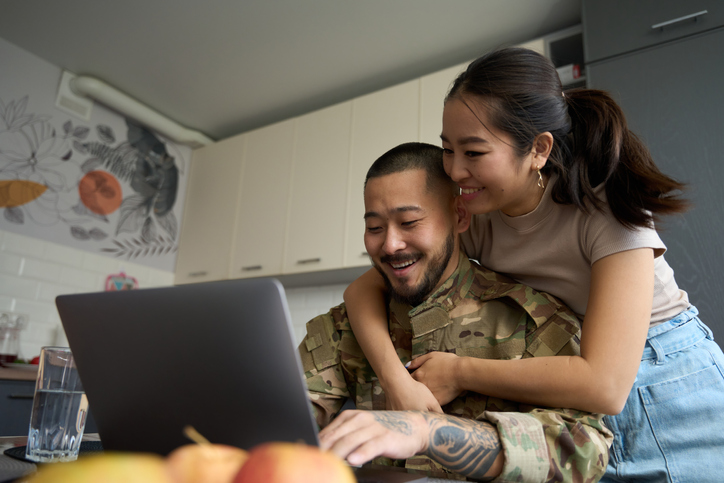Explanation of the FHA Flipping Rule
The FHA flipping rule is a set of guidelines imposed by the Federal Housing Administration to regulate the quick resale of properties, commonly known as “flipping.”
This rule primarily aims to prevent fraudulent property flipping, where homes are quickly resold at artificially inflated prices, often following superficial or substandard renovations.
Under this rule, a property that has been acquired by a seller and is being resold within 90 days is typically ineligible for FHA financing. Additionally, if the resale occurs between 91 and 180 days where the sale price is 100% over the purchase price, the lender must obtain a second appraisal to ensure the value is legitimate and not artificially inflated.
Eligibility Criteria for Properties Under the FHA Flipping Rule
To qualify for an FHA loan under the flipping rule, certain criteria must be met:
Time Restrictions: As mentioned earlier, the key factor is the time between the previous sale of the property and the signing of the sales contract by the FHA buyer. If the property is being resold within 90 days of the previous sale, it is generally ineligible for an FHA loan. For properties being resold between 91 and 180 days where the new selling price is more than 100% of the previous price, a second appraisal may be required to justify the increase in value.
Documentation Requirements: In cases where a second appraisal is required, sellers must provide documentation justifying the increased value, such as records of substantial rehabilitation or remodeling. Usually receipts are requested by the mortgage underwriters and a breakdown of the work that was completed.
Lender Responsibilities: FHA-approved lenders are responsible for ensuring that the properties being financed meet these guidelines. They must verify the ownership history of the property and ensure compliance with the flipping rule.
Exceptions to the FHA Flipping Rule
There are exceptions to this rule, particularly in cases where:
- The property is being sold by an employer or relocation agency in connection with the relocation of an employee.
- The sale is of properties acquired by the seller through inheritance.
- The sale is of properties sold by government agencies.
- The sale is of properties sold by HUD under its Real Estate Owned (REO) program.
Impact on Buyers and Sellers
The FHA flipping rule significantly influences both buyers and sellers in the real estate market, albeit in different ways:
For Buyers:
Property Availability: One of the most direct impacts of the FHA flipping rule on buyers, especially first-time homebuyers using FHA loans, is the limitation it places on the availability of certain properties. Homes that have been flipped within the 90-day window are not eligible for FHA financing, potentially reducing the pool of available homes in fast-paced markets where flipping is common.
Price Assurance: The rule provides a level of protection against overinflated property prices. By requiring a second appraisal for homes sold at significantly higher prices within a short period, buyers are safeguarded against artificially high prices resulting from speculative flipping.
Quality of Renovations: Since the FHA flipping rule discourages rapid reselling, it can indirectly influence the quality of renovations. Sellers might opt for more substantial and quality improvements to justify a higher price when a property is sold outside the 90-day window.
For Sellers and Real Estate Investors:
Resale Timing: For sellers, particularly investors involved in property flipping, the rule necessitates careful planning regarding the timing of the sale. Selling a property within 90 days of purchase may limit the pool of potential buyers to only those not using FHA financing, which can be a significant segment in many markets.
Investment Strategy: The rule may influence investment strategies. Investors might be more inclined to focus on properties that require more extensive renovations, as these projects typically take longer than 90 days, thus bypassing the rule’s restrictions.
Market Dynamics: In areas with a high concentration of FHA buyers, the flipping rule can impact the overall market dynamics. Sellers in these areas might experience longer selling times or be compelled to adjust their pricing strategies to attract non-FHA buyers if they choose to flip properties within the restricted timeframe.
Compliance and Documentation: Sellers must be diligent in maintaining thorough documentation of property improvements and transactions to ensure compliance with FHA rules and to facilitate smooth transactions for FHA buyers.
Overall Market Impact
The FHA flipping rule aims to stabilize the housing market by discouraging rapid and potentially speculative property flipping. This contributes to the creation of a more balanced and fair market, benefiting buyers by ensuring fair pricing and quality renovations.
However, it also requires sellers and investors to be more strategic and considerate in their approach to property flipping, particularly in markets with a high volume of FHA loan activity.
Comparison with Other Loan Types
Understanding how the FHA flipping rule contrasts with regulations pertaining to other types of home loans is crucial for buyers and investors.
Here’s a comparative analysis:
1. Conventional Loans
- Flipping Restrictions: Conventional loans, which are not government-backed, typically do not have restrictions similar to the FHA’s 90-day flipping rule. This flexibility can make conventional loans more appealing for buyers interested in recently flipped properties.
- Credit and Down Payment Requirements: Conventional loans generally have stricter credit score and down payment requirements compared to FHA loans. This can make them less accessible to first-time homebuyers or those with lower credit scores.
- Property Standards: While FHA loans have specific property condition requirements, conventional loans are often less stringent in this regard, offering more leeway in the type of properties that can be financed.
2. VA Loans:
- Flipping Restrictions: VA loans, designed for military service members and veterans, do not have a specific flipping rule like the FHA. However, lenders may have their own guidelines to prevent loan fraud and ensure property value.
- Borrower Eligibility: Unlike FHA loans, which are available to a broader audience, VA loans are exclusive to veterans and active military members, limiting their applicability in the broader market.
- Down Payment and Insurance: VA loans offer the benefit of no down payment and no private mortgage insurance, contrasting with FHA loans that require mortgage insurance regardless of down payment size.
3. USDA Loans:
- Flipping Restrictions: Similar to VA loans, USDA loans (focused on rural homebuyers) do not have a specific flipping rule. However, they do emphasize the condition and value of the property.
- Location and Income Restrictions: USDA loans are geographically and income-restricted, targeting lower-income buyers in rural areas, unlike the broader applicability of FHA loans.
- No Down Payment: USDA loans offer zero down payment options, which can be more attractive to eligible buyers than FHA loans that require a minimum down payment.
4. Jumbo Loans:
- Flipping Restrictions: Jumbo loans, which exceed the conforming loan limits set by Fannie Mae and Freddie Mac, do not typically have specific flipping rules. However, lenders might impose their own guidelines due to the higher risk associated with larger loan amounts.
- Strict Eligibility Criteria: These loans have more stringent credit, income, and down payment requirements, catering to a different segment of the market than FHA loans.
Key Takeaways:
- The FHA’s flipping rule is unique and specifically designed to regulate the quick resale of properties to protect FHA loan borrowers.
- Other loan types, while not having similar flipping rules, have their own sets of regulations and requirements that cater to different segments of the housing market.
- Buyers and investors should consider these differences when deciding on property investments and financing options, as each loan type offers distinct advantages and limitations depending on the buyer’s financial situation, property type, and market dynamics.
Tips for Navigating the FHA Flipping Rule
Navigating the FHA flipping rule can be challenging for both buyers and sellers.
Here are some tips to effectively manage these regulations:
For Buyers:
- Work with Experienced Professionals: Engage a real estate agent and a mortgage lender who have a deep understanding of FHA loans and the flipping rule. Their expertise can help you identify eligible properties and navigate the buying process more efficiently.
- Research Property History: Before making an offer, research the property’s sale history to determine if it falls within the flipping rule’s time frame. This can be done through public records or by asking your real estate agent.
- Plan for Potential Delays: If you’re interested in a property that’s subject to the flipping rule, be prepared for additional scrutiny and possible delays in the loan process. This might include the need for a second appraisal.
- Explore Other Financing Options: If you find a flipped property that doesn’t qualify for an FHA loan, consider other financing options like conventional loans, which don’t have the same restrictions.
For Sellers and Investors:
- Understand the 90-Day Rule: If you’re flipping a property, plan your sale timeline to avoid the 90-day restriction. Selling after this period broadens your potential buyer pool to include FHA loan recipients.
- Document Renovations and Repairs: Keep detailed records of all renovations and repairs made to the property. This documentation can be crucial for justifying the property’s value, especially if you’re selling within 90 to 180 days of purchase.
- Price Reasonably: If selling within 91 to 180 days of purchase, price the property reasonably to avoid triggering the need for a second appraisal. This can help in closing the deal more smoothly with FHA buyers.
- Market to the Right Audience: If your property is subject to the flipping rule, tailor your marketing to attract non-FHA buyers, such as those with conventional financing.





